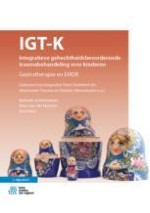Samenvatting
Dit hoofdstuk is het eerste hoofdstuk van het derde deel van het boek over de EMDR binnen IGT-K. Het Nederlandse EMDR-standaardprotocol is op een aantal punten anders dan het originele Amerikaanse protocol. Hierdoor verschilt het Nederlandse IGT-K model van de oorspronkelijke versie in het land waar het ontwikkeld werd. In dit hoofdstuk wordt beschreven hoe deze verschillen zijn uitgewerkt in het Nederlandse model. Er wordt ook ingegaan op hoe de werkgeheugentheorie en de EMDR-zoekstrategieën zoals wij die in Nederland kennen, binnen IGT-K gebruikt worden. De verschillen in het schrijven van een therapeutisch EMDR-verhaal en hoe dit binnen IGT-K wordt vormgegeven, staan in de laatste paragraaf van dit hoofdstuk.
